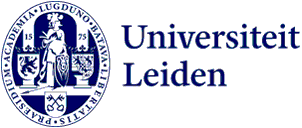
'Only when you give students freedom, exceptional results are possible'
It doesn't happen every day that the research project of a first-year bachelor’s student results in a scientific publication. And not only that, but as first author and on the cover of a leading physics journal. ‘We have given our lab education a thorough overhaul and it is paying off.’
That’s whay lecturer Paul Logman says. He guides the first-year bachelor students through the principles of experimental physics. With student Wout Goesaert, he realised immediately that he had chosen a remarkable research topic. ‘Usually, students do four different experiments,' he says. 'But Wout had such an interesting experiment that I encouraged him to get to the bottom of it.'
From a child’s curiosity to a robust experiment
'As a child, I was intrigued by the ripples that appear in a jet of water when you hold your finger under it,’ Goesaert says.' Just before I started this course, I happened to see a video about this exact topic. I knew straight away that I wanted to investigate it.' With his lab partner, Goesaert built a simple setup in which they could adjust the distance between the tap and their finger. This gave them insight into the wave pattern in the water jet. 'Paul was immediately enthusiastic. He motivated us to study it further and publish the outcomes.'
'The lab education here is really special.’ - Wout Goesaert
The phenomenon the student investigated was already known but not fully explained, Logman says. 'This research has really provided new data that advances physics. And what is equally important for us: we have also added a manual that allows people to simulate this effect themselves, for example highschool teachers. That makes it more accessible to a wider audience.'
Goesaert's experiment in action
Due to the selected cookie settings, we cannot show this video here.
Watch the video on the original website or
'Sometimes new physics is right in front of you'
The publication took the duo more than three years. Meanwhile, Goesaert has already started his master's degree in astronomy, but thanks to Logman's course he also became very enthusiastic about experimenting in the lab. 'The lab education here is really special. We are a large group and yet we are given a lot of freedom. This allows you to shape your own research.' It also confirms to him that everything is interesting if you have a good dose of curiosity. 'You don't always need a particle accelerator or mega telescope. Sometimes new physics is just right in front of you. I really like that.'
Still, it is a unique achievement Logman knows. 'We let students decide what they want to investigate. So you don't know what the outcome will be,' he explains. 'This publication was a surprise, though. The American Journal of Physics accepts only 15% of submitted articles and almost never from undergraduate students. And we even made it to the front page!'

Students get the freedom to choose themselves in 'open practical'
The choice of this form of practical teaching is not accidental. Twenty years ago, the Leiden Institute of Physics (LION) decided to completely rethink the way they do practicals. 'We sat down to look at what we really want to achieve with our lab education. Should students be able to replicate a trick or do real research? If you have pre-determined experiments that are explained step-by-step, a discovery like Wout's is not possible. We have given our lab education a thorough overhaul and it is paying off.'
'People from the Netherlands, but also internationally, visit us to see our open practical,' says Logman, who enthusiastically promotes this form of education. ‘Actually, I think this is the only right way to carry out lab education.'
Read the publication
The scientific article 'Easy method to establish the dispersion relation of capillary waves on water jets' is published in the Februari edition of the American Journal of Physics.
To the article